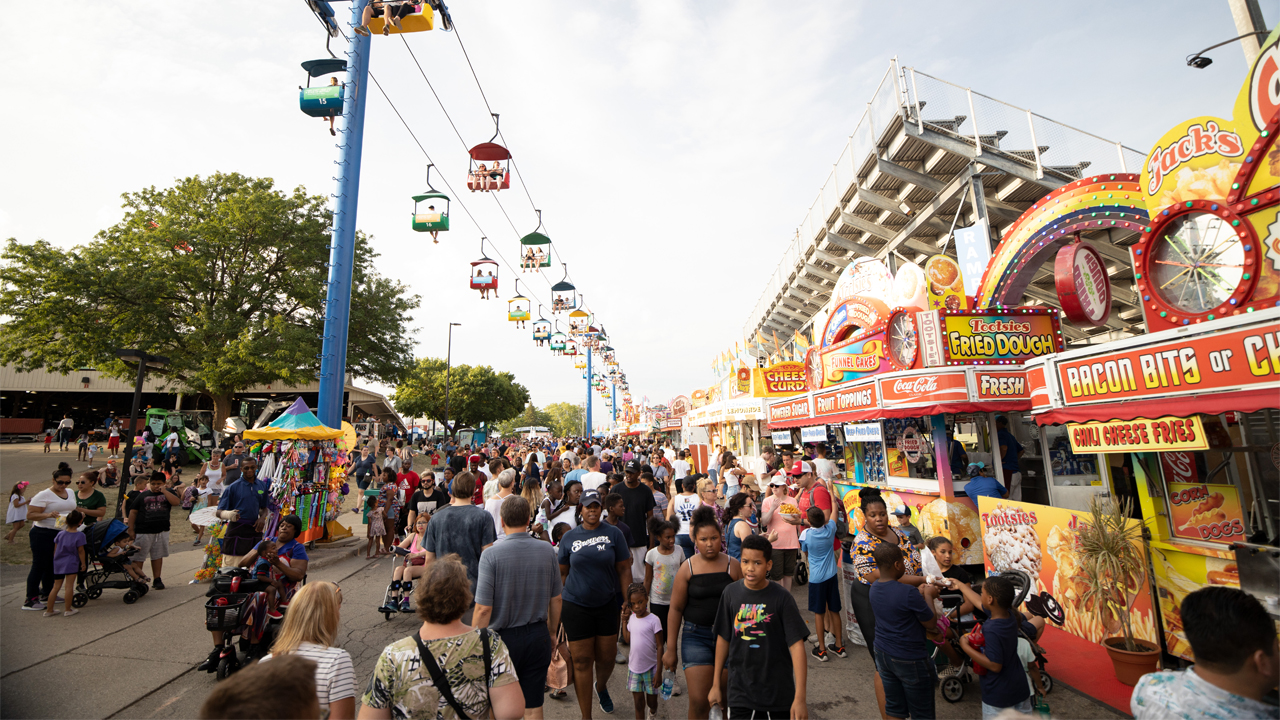With nearly 50% of Wisconsinites fully vaccinated against COVID-19 and local restrictions lifted, most consumers in recent months have gotten at least a taste of what life was like before the pandemic. Whether it’s tailgating at a Brewers game at American Family Field or sitting indoors at a favorite local restaurant, people are going out and gathering again – and they’re spending money on entertainment.
According to data from the U.S. Bureau of Economic Analysis, consumers since March have been spending more per month than they were when the pandemic hit. Monthly consumer spending dipped slightly in May but spending on services continued to climb, by $74.3 billion. The increase was led by spending on recreation services, food services and accommodations.
“The issue with the economy is not demand,” said Jim McGibany, chair of the department of economics at Marquette University. “There’s enough demand out there, especially from the consumer point of view.”
Plus, the personal savings rate remains higher than pre-pandemic levels.
“That means consumers have the funds available still to spend,” said McGibany.
The end of stimulus checks from the federal government could be one cause for spending to slow this year, but even without that supplemental source of income, “it still looks like consumers are strong enough to keep pushing the economy forward,” he said.
For many industries, supply chain disruptions stand in the way of fully capitalizing on the sudden increase in business activity. For the entertainment and hospitality sectors, the ongoing labor shortage is the greatest barrier.
Wisconsin State Fair is just a couple weeks away from its return as one of the region’s first large-scale festival events since the pandemic. State Fair Park alone needs at least 1,800 seasonal workers to produce the 11-day fair, not to mention the additional labor needed by vendors and operators. As of late June, the organization had not yet reached its hiring target.
“We’re screaming from the rooftops that we can’t do this without the help and without people wanting to work,” said Kathleen O’Leary, chief executive officer at Wisconsin State Fair Park.
As an incentive, State Fair has increased its minimum hourly wage to $10. Earlier this month, it hosted the Summer Fair Job Fest with Summerfest, which is gearing up for a massive undertaking of its own. The annual music festival will take place over three consecutive weekends in September this year, compared to the traditional 11-day format in late June and early July.
State Fair organizers aren’t banking on this year’s attendance to reach the 1 million mark (as it had for seven consecutive years prior to 2020), said O’Leary. Still, the event remains an important source of income for its 600-plus food, beverage and commercial vendors and an economic impact generator to southeastern Wisconsin – especially after a devastating year.
Downtown Milwaukee’s bars and restaurants have already felt the ripple effect of local entertainment in recovery. The Milwaukee Bucks’ playoff run to the NBA Finals brought tens of thousands of fans to watch games from the seats of Fiserv Forum or outside on giant TV screens set up on the arena’s public plaza. The scene of the Deer District packed with more than 20,000 screaming fans made national headlines as the spotlight shone bright on Milwaukee.
The surge in Deer District foot traffic has been a boon for businesses like Drink Wisconsinbly Pub, one of the three bar-restaurants currently open along the Bucks’ entertainment block. June was the pub’s best month since opening in spring 2019, said Ryan Walther, co-owner of Wisconsinbly Holdings.
Many downtown establishments rely on traffic driven by entertainment at Fiserv Forum and other venues. In the wake of the NBA playoffs, it’s important to keep the momentum going with the return of concerts, shows and theater productions, said Peggy Williams-Smith, president and chief executive officer at VISIT Milwaukee.
“We need those shows to be taking place in order for our restaurants and bars to be able to maintain the same levels of business they’re seeing now,” she said. “They’re vitally important to the tourism ecosystem. People come here from all over the state as well as Chicago to see shows here because we have such amazing venues.”
Sixteen months after the pandemic’s onset, some segments of the entertainment industry – including movie theaters, touring musicians, and the performing arts – are still gearing up.
Nationwide, 85% of movie theaters are back up and running again. Milwaukee-based Marcus Theatres is still working to reopen the last few of its 89 theater locations in 17 states.
After months of studio production lags, the movie industry is headed for a huge surge in supply: Two to three new films are set to be released almost every week through the rest of the year. Rolando Rodriguez, chief executive officer and president at Marcus Theatres, said the chain is poised to capture demand for both new film content and an entertainment experience that consumers have been deprived of while stuck at home during the pandemic.
“We’re human beings, we like to socialize, and we want to be around people,” said Rodriguez. “There’s no better way than to enjoy a movie, with the emotions that are drawn from a movie – the laughter, the tears, the aha moments … sharing that artistic experience.”
